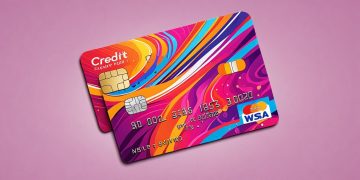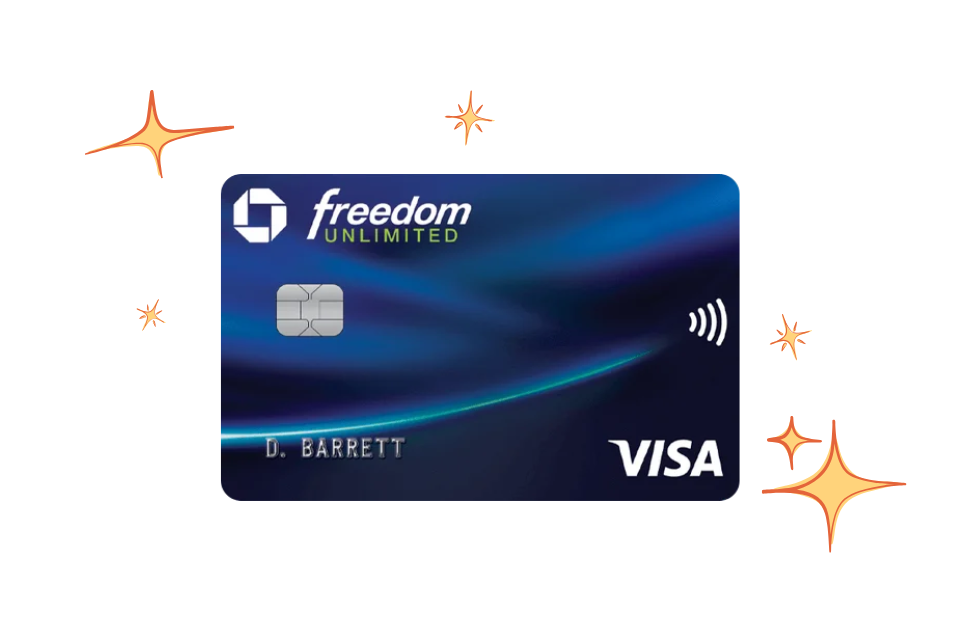Credit Cards and Rewards: How to Maximize Your Benefits

Understanding Credit Card Rewards
Credit cards have become indispensable financial tools for many Americans, providing not only purchasing power but also rewards that enhance their value. Utilizing these rewards effectively can lead to significant savings and benefits. To maximize your credit card rewards, it is crucial to understand how they operate and the strategic ways to utilize them.
Key Features of Credit Card Rewards
- Types of Rewards: Credit card rewards typically fall into three main categories: cash back, travel points, and merchandise discounts. Cash back cards allow users to earn a percentage of their spending back as cash, often around 1-5%. Travel points can be redeemed for airfare, hotel stays, or experiences, appealing to frequent travelers. Merchandise discounts may enable cardholders to shop at partner retailers at reduced prices or earn gift cards.
- Sign-up Bonuses: Many credit cards offer enticing initial rewards for new cardholders, often including sign-up bonuses that can range from $100 to several hundred dollars equivalent in rewards. For instance, a card might offer 50,000 travel points after spending $3,000 in the first three months. These bonuses serve as an immediate incentive that can substantially increase the overall value of the card in the initial months.
- Categories: Many credit cards provide enhanced rewards for specific spending categories, such as dining, groceries, or gas. For example, a card might offer 3% cash back on groceries and 2% on gas purchased, allowing users to align their spending with reward categories. Cardholders should be aware of these categories to maximize their rewards based on personal spending habits.
By leveraging these features, cardholders can optimize their spending habits and earn rewards more efficiently. However, it is essential to also consider factors such as annual fees and interest rates when selecting a credit card. For instance, a card with a $95 annual fee might require careful spending analysis to ensure that the rewards earned exceed the fee. A strategic approach not only enhances the potential benefits but also maintains financial efficiency.
Strategies for Maximizing Rewards
- Pay Your Balance in Full: Avoiding interest charges increases net rewards significantly. If you carry a balance, high interest rates can erode any benefits gained from rewards. Paying off balances monthly is key to maximizing value.
- Utilize Bonus Categories: Tailor your spending to focus on areas that offer higher rewards percentages. For example, if your card offers 5% cash back on restaurants, dining out frequently can multiply your rewards significantly over time.
- Track Expiration Dates: Many rewards programs have a redemption timeline, leading to potential loss of points if not used within a certain period. Keeping track of these expiration dates ensures you can fully benefit from the rewards earned.
By applying these strategies, cardholders can turn their everyday purchases into rewarding experiences. Understanding the intricacies of credit card rewards is the first step toward financial empowerment. Ultimately, informed cardholders can enjoy not just the convenience of credit but also substantial rewards that enhance their financial wellbeing.
DISCOVER MORE: Click here to uncover the impact of disinformation
Strategies for Maximizing Rewards
To fully capitalize on credit card rewards, cardholders must adopt deliberate and systematic strategies. This approach not only enhances the accumulation of rewards but also ensures that they can be utilized effectively. Here are several significant strategies to consider:
- Pay Your Balance in Full: One of the most fundamental principles to reap the benefits of credit card rewards is to pay the balance in full each month. Carrying a balance leads to interest charges that can significantly outpace the value of any rewards earned. By avoiding interest payments, cardholders enhance their net savings and maximize the advantages offered by their credit cards.
- Utilize Bonus Categories Effectively: Many credit cards offer enhanced rewards for specific categories of spending, such as dining, grocery purchases, or travel expenses. It is prudent to strategize spending to align with these bonus categories. For instance, if a card offers 5% cash back on groceries, making purchases in that category can exponentially increase accumulated rewards over time. Understanding your spending habits and adjusting them to these categories is vital for maximizing benefits.
- Take Advantage of Sign-up Bonuses: When applying for new credit cards, potential rewards can often be significantly boosted through sign-up bonuses. Many cards offer bonuses, which may require a certain spending threshold within the first few months. For instance, earning 50,000 points after spending $4,000 in the first three months can lead to substantial benefits, particularly if those points are redeemed for travel or high-value purchases.
- Track Points and Rewards: Staying informed about the status of earned rewards and their expiration dates is crucial. Many credit card rewards programs stipulate expiration timelines, leading to a potential forfeiture of points if not redeemed in time. Developing a tracking method—whether through an app or manual record—can help ensure that rewards are utilized effectively before they lapse.
- Focus on Card Benefits: Beyond rewards points, credit cards typically offer additional perks that can enhance overall value. These may include travel insurance, purchase protections, extended warranties, and discounts with partner retailers. Familiarizing oneself with these benefits can play a pivotal role in maximizing the value gained from card ownership.
By implementing these strategies, cardholders can effectively turn everyday spending into rewards. Understanding the nuances of credit card rewards and actively managing them is an essential part of financial strategy, leading to enhanced savings and value. Each credit card has unique opportunities, and a thoughtful approach can significantly elevate the benefits derived from them.
DISCOVER MORE: Click here to learn how budgeting apps can lead you to financial independence
Understanding Reward Structures
To optimize rewards from credit cards, it is imperative to comprehend the different reward structures available. Each credit card operates on a unique rewards system, which can significantly impact how benefits are accrued. Here, we explore the primary types of reward systems and how cardholders can leverage them for maximum gains:
- Points Systems: Many credit cards operate on a points-based structure, where each dollar spent translates into a certain number of points. These points can later be redeemed for travel, merchandise, or cash back. The key to success with points systems lies in understanding the redemption value. For example, using points for travel often yields a higher value compared to redeeming them for statement credits. Cardholders should evaluate the best redemption options available and aim to maximize their points’ worth.
- Cash Back Rewards: Cash back credit cards provide a straightforward way to earn rewards through a percentage of total spending. There are typically different tiers of cash back percentages depending on the types of purchases. For instance, a card may offer 1.5% cash back on all purchases but provide 3% cash back for specific categories. Cardholders should consider focusing their spending in categories that yield higher cash back rates to increase overall returns.
- Travel Rewards: Travel rewards credit cards offer extensive benefits for frequent travelers, including miles that can be redeemed for flights or hotel stays. These cards often feature partnerships with airlines and hotel chains, which can lead to greater incentives when booking through specific channels. To maximize travel rewards, cardholders should investigate transfer partners and promotional offers that can enhance travel experiences. Taking advantage of airline partnerships and loyalty programs can provide additional value through upgrades, lounge access, and other travel-related benefits.
- Tiered Rewards Programs: Some credit cards implement tiered rewards structures, where spending in certain categories unlocks additional rewards. These tiers may start with an initial cash back rate and elevate to a higher percentage upon reaching spending limits. Cardholders should be aware of their spending habits and target their purchases to reach these tiers, thereby maximizing the rewards earned during promotional periods.
- Annual Fees and Break-even Analysis: To evaluate the true benefit of a credit card, it is essential to weigh the annual fees against potential rewards. In some cases, the upfront cost of annual fees can be offset by the value derived from rewards and cardholder benefits. Conducting a break-even analysis, assessing expected rewards against fees, can provide valuable insight into which cards provide the greatest net benefit.
By gaining a comprehensive understanding of reward structures and aligning spending behaviors accordingly, cardholders can navigate the complex landscape of credit card rewards with confidence. This strategic approach, focused on maximizing the potential of every purchase, not only enhances the overall rewards earned but also ensures that each credit card experience is optimized for long-term financial benefit.
DISCOVER MORE: Click here to learn about reducing business expenses with cloud technology
Conclusion
In today’s financial landscape, utilizing credit cards effectively can significantly enhance your financial well-being through various reward systems. Credit cards are not just tools for purchases; they can be leveraged to build savings and enhance travel experiences when used wisely. For example, many popular cards offer sign-up bonuses that can reward new cardholders with hundreds of dollars in cash back or travel points after meeting a minimum spending requirement within the first few months. This initial incentive can be a valuable addition to strategic spending habits.
Understanding the nuances of different credit cards—from points and cash back to travel rewards—is crucial for maximizing the benefits they offer. Each type of card caters to different consumer needs; cash back cards might be ideal for everyday purchases, while travel rewards cards can provide significant value for frequent travelers. For instance, a card offering three points per dollar spent on travel and dining can lead to substantial rewards for those who often dine out or travel for work.
Moreover, keeping an eye on annual fees is essential. Not all cards have fees, but some premium cards charge hundreds of dollars per year but provide extensive benefits, such as travel insurance, airport lounge access, and higher reward rates. By conducting a break-even analysis to compare potential rewards and costs, consumers can make informed decisions that yield the best financial outcomes. It is often more beneficial to choose a card that charges an annual fee if the overall benefits outweigh those costs over time.
It is also crucial to stay updated on evolving credit card offerings and rewards programs, as these can provide new opportunities for leveraging bonuses or acquiring rewards more efficiently. Financial institutions frequently refresh their rewards structures, including limited-time offers or enhanced bonus categories that could align with consumers’ spending patterns.
Finally, maximizing credit card benefits requires a proactive approach. This involves regularly reviewing spending patterns and adjusting strategies based on current reward offerings, as certain cards may rotate promotional categories quarterly, which can significantly impact earning potential. Taking full advantage of partnerships, such as airline or hotel alliances, can also multiply rewards. By adopting these practices, individuals can not only enhance their rewards but also strengthen their overall financial position, ensuring that their credit card usage remains a valuable asset rather than a burden.









